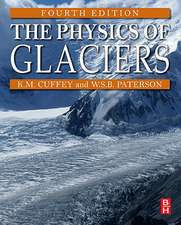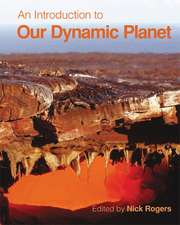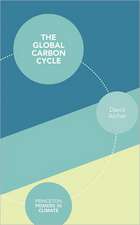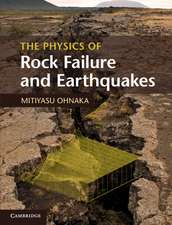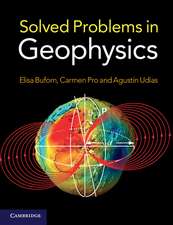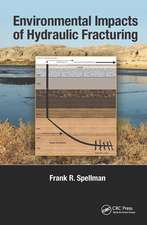Extremes in Nature: An Approach Using Copulas: Water Science and Technology Library, cartea 56
Autor Gianfausto Salvadori, Carlo De Michele, Nathabandu T. Kottegoda, Renzo Rossoen Limba Engleză Paperback – 23 noi 2014
| Toate formatele și edițiile | Preț | Express |
|---|---|---|
| Paperback (1) | 908.61 lei 6-8 săpt. | |
| SPRINGER NETHERLANDS – 23 noi 2014 | 908.61 lei 6-8 săpt. | |
| Hardback (1) | 915.89 lei 6-8 săpt. | |
| SPRINGER NETHERLANDS – iun 2007 | 915.89 lei 6-8 săpt. |
Din seria Water Science and Technology Library
- 18%
 Preț: 925.15 lei
Preț: 925.15 lei - 18%
 Preț: 928.77 lei
Preț: 928.77 lei - 18%
 Preț: 914.06 lei
Preț: 914.06 lei - 15%
 Preț: 621.67 lei
Preț: 621.67 lei - 18%
 Preț: 858.26 lei
Preț: 858.26 lei - 18%
 Preț: 932.58 lei
Preț: 932.58 lei -
 Preț: 441.90 lei
Preț: 441.90 lei - 18%
 Preț: 713.59 lei
Preț: 713.59 lei -
 Preț: 384.60 lei
Preț: 384.60 lei - 18%
 Preț: 752.50 lei
Preț: 752.50 lei - 18%
 Preț: 1178.40 lei
Preț: 1178.40 lei - 18%
 Preț: 919.38 lei
Preț: 919.38 lei - 18%
 Preț: 1177.80 lei
Preț: 1177.80 lei - 18%
 Preț: 746.34 lei
Preț: 746.34 lei - 18%
 Preț: 1079.97 lei
Preț: 1079.97 lei - 18%
 Preț: 919.98 lei
Preț: 919.98 lei - 24%
 Preț: 859.82 lei
Preț: 859.82 lei - 18%
 Preț: 916.33 lei
Preț: 916.33 lei - 18%
 Preț: 1064.96 lei
Preț: 1064.96 lei - 18%
 Preț: 1075.73 lei
Preț: 1075.73 lei - 15%
 Preț: 619.75 lei
Preț: 619.75 lei - 18%
 Preț: 1073.29 lei
Preț: 1073.29 lei - 18%
 Preț: 703.58 lei
Preț: 703.58 lei - 24%
 Preț: 804.94 lei
Preț: 804.94 lei - 18%
 Preț: 859.76 lei
Preț: 859.76 lei - 18%
 Preț: 981.08 lei
Preț: 981.08 lei - 24%
 Preț: 1022.42 lei
Preț: 1022.42 lei -
 Preț: 598.52 lei
Preț: 598.52 lei - 18%
 Preț: 969.88 lei
Preț: 969.88 lei
Preț: 908.61 lei
Preț vechi: 1108.06 lei
-18%
Puncte Express: 1363
Preț estimativ în valută:
160.84€ • 186.82$ • 139.34£
160.84€ • 186.82$ • 139.34£
Carte tipărită la comandă
Livrare economică 02-16 martie
Preluare comenzi: 021 569.72.76
Specificații
ISBN-13: 9789401782753
ISBN-10: 940178275X
Pagini: 312
Ilustrații: XIV, 292 p.
Dimensiuni: 155 x 235 x 16 mm
Greutate: 0.44 kg
Ediția:2007
Editura: SPRINGER NETHERLANDS
Colecția Springer
Seria Water Science and Technology Library
Locul publicării:Dordrecht, Netherlands
ISBN-10: 940178275X
Pagini: 312
Ilustrații: XIV, 292 p.
Dimensiuni: 155 x 235 x 16 mm
Greutate: 0.44 kg
Ediția:2007
Editura: SPRINGER NETHERLANDS
Colecția Springer
Seria Water Science and Technology Library
Locul publicării:Dordrecht, Netherlands
Public țintă
ResearchCuprins
Univariate Extreme Value theory.- Multivariate Extreme Value theory.- Bivariate Analysis Via Copulas.- Multivariate Analysis Via Copulas.- Extreme Value Analysis Via Copulas.
Recenzii
From the reviews:
"This monograph deals with both theoretical and practical aspects of the mathematical theory of extremes. ... The book surely will be interesting and useful to researchers and practitioners in the areas of geophysics and environmental sciences and engineering. It can be also useful to any one interested in having a rigorous summary of the main results and modern developments of the theory of extreme events in the context of physical applications." (Jaume Masoliver, Journal of Statistical Physics, Vol. 134, 2009)
"This monograph deals with both theoretical and practical aspects of the mathematical theory of extremes. ... The book surely will be interesting and useful to researchers and practitioners in the areas of geophysics and environmental sciences and engineering. It can be also useful to any one interested in having a rigorous summary of the main results and modern developments of the theory of extreme events in the context of physical applications." (Jaume Masoliver, Journal of Statistical Physics, Vol. 134, 2009)
Textul de pe ultima copertă
The study of the statistics of extreme events is an essential first step in the mitigation of natural catastrophies, that often cause severe economic losses worldwide. This book is about the theoretical and practical aspects of the statistics of Extreme Events in Nature.
Most importantly, this is the first text in which Copulas are introduced and used in Geophysics.
Several topics are fully original, and show how standard models and calculations can be improved by exploiting the opportunities offered by Copulas. In addition, new quantities useful for design and risk assessment are introduced. Practicioners in all research areas of Geosciences and extreme events (including Finance and Insurance, closely related to natural disasters) will definitely benefit from the new Copula-approach outlined in the book.
Audience
This volume will be of interest to researchers and practitioners in the fields of civil and environmental engineering, geophysics, geosciences, geography and environmental science. Also scientists and undergraduate up to post graduate level students in water resources and hydrology will find valuable information in this book.
Most importantly, this is the first text in which Copulas are introduced and used in Geophysics.
Several topics are fully original, and show how standard models and calculations can be improved by exploiting the opportunities offered by Copulas. In addition, new quantities useful for design and risk assessment are introduced. Practicioners in all research areas of Geosciences and extreme events (including Finance and Insurance, closely related to natural disasters) will definitely benefit from the new Copula-approach outlined in the book.
Audience
This volume will be of interest to researchers and practitioners in the fields of civil and environmental engineering, geophysics, geosciences, geography and environmental science. Also scientists and undergraduate up to post graduate level students in water resources and hydrology will find valuable information in this book.
Caracteristici
Topics treated are diverse and of wide practical significance Clear exposition of theoretical background Application of copulas Nonstationary, bivariate and multivariate methods Treatment of natural disasters

